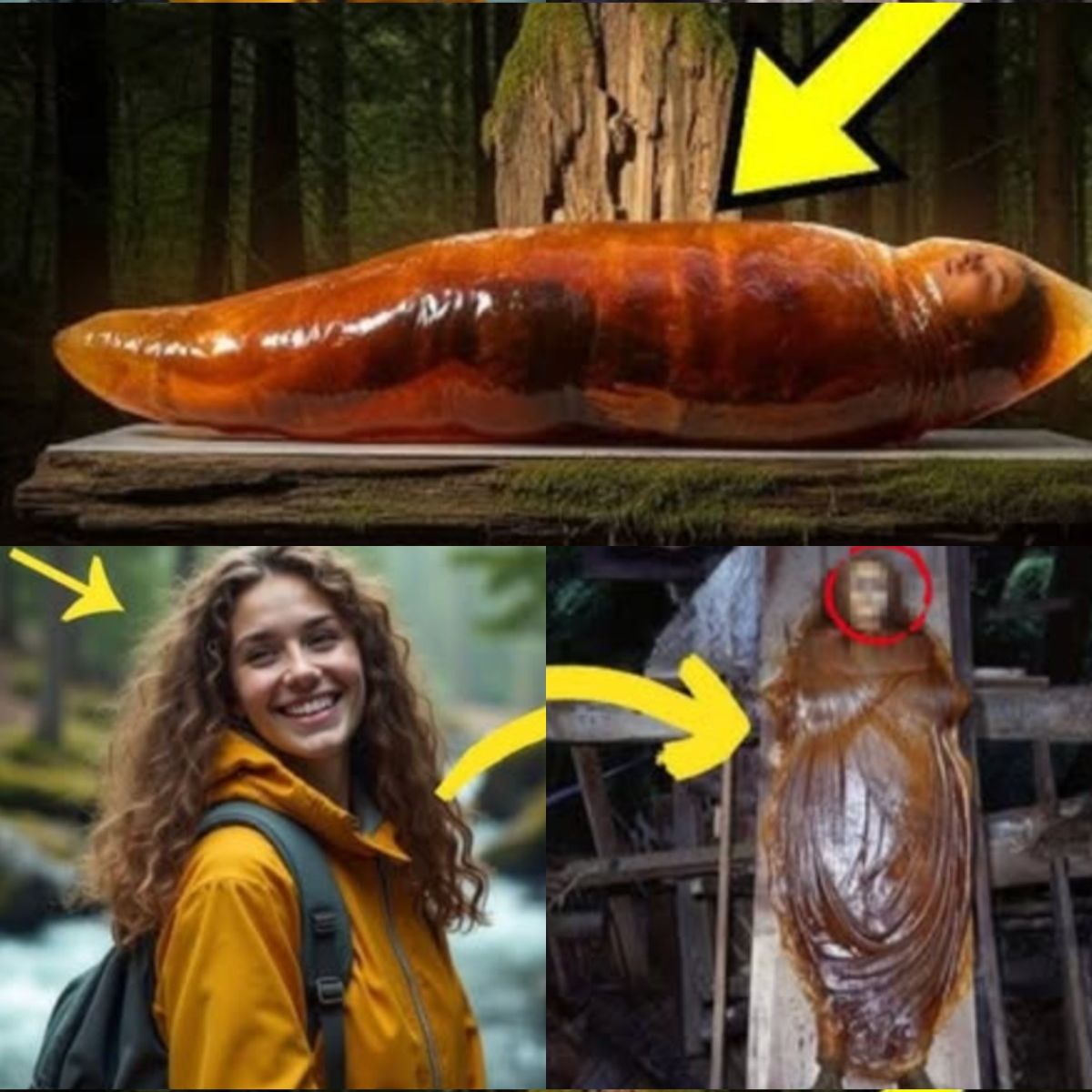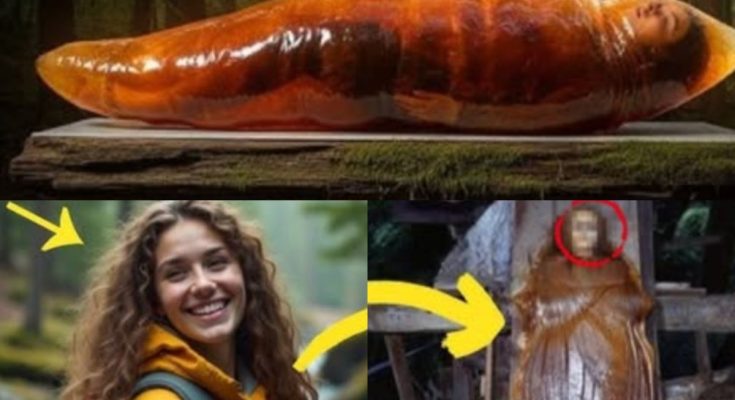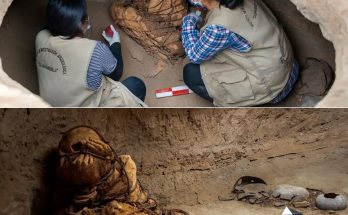The Girl in the Yellow Jacket — A Smoky Mountains Mystery
The ranger who took the report still remembers the way the friend said it: “Her smile lit up the trails.”
That’s how they always start—smiles, late starts, good weather, the easy kind of confidence that lets you leave your heavier jacket in the trunk. The morning was bright, the air peeled thin by autumn. The friend pointed at the map spread across the hood of a park truck and traced the plan with a shaking finger: Alum Cave to LeConte, lunch on the bluff, back down before dark. “She wore her favorite yellow jacket,” the friend added, and then, quieter, “We thought we’d see her right behind us.”
In the Great Smoky Mountains, the sun likes to lie. It rises clean, sincere, and by noon it’s a trickster, twisting fog through rhododendron and a dozen switchbacks where sound doesn’t carry. The rangers tell people that the Smokies aren’t wilderness in the western sense—there are towns at the edges, cabins tucked into coves, highways you can hear if the wind is right—but the old forest keeps its secrets anyway. Sometimes it offers them back. Most times it doesn’t.
At 10:42 a.m., a trail cam at the Alum Cave Bluffs captured a blur of yellow and a ponytail swinging like a metronome. You can’t see her face—just a shoulder, the zipper pull glinting. At 11:06, a couple descending from LeConte remembered a girl in yellow who said, “Almost there?” and laughed when they told her, “Just two more false summits.” At 11:51, a little north of Inspiration Point, a man in a black cap heard someone singing under her breath—a half-remembered pop song, words trailing into “da-da-da” when lyrics failed.

At 12:13, clouds rolled in, cold shouldering the sunshine. The mountains closed their fist.
The missing call came at 5:27 p.m. The friend—Sophie—had sprinted down to the trailhead when the laughing stopped echoing back. She waited by the Alum Cave sign until the parking lot turned violet with evening and the bird calls shifted from day to night. “We split for photos,” she told the ranger. “She said she wanted a shot of the arch from a little lower, where the trail curves. She waved her arm—‘See you in a bit!’—and I never saw her again.”
Search and Rescue mobilized at 6:05. Headlamps bobbed like luminous breadcrumbs through the spruce-fir forest. Radios crackled with numbers, angles, grid squares. Dogs arrived—a shepherd with a bright orange vest, a bloodhound with sad eyes and a tongue too big for its mouth. The handlers took a scent article from the backpack Sophie had kept with her: a sweatshirt, faintly citrus with her friend’s detergent.
The first night they walked all the way to LeConte Lodge and back, calling her name between gusts. Sound dissolved in the fog. A dozen times, a responder swore he heard a “Hey!” from below the trail, thin and threadbare, but when they pushed through laurel hells and slid on wet rock, there was only air and icy water and roots that grabbed at ankles like hands.
By dawn, the mountain had changed its mind again. The fog broke. A hawk sketched circles over the valley. On the radio, someone asked for coffee with a voice that sounded too hopeful for the circumstances.
Day Two: they found a set of prints—Vasque boots, women’s size seven—skirting a cluster of boulders just past the Eye of the Needle. Another set, smaller, older, crossed them, then vanished in leaf litter. “She could have missed the turn,” a ranger said, pointing to where a braided social path peeled off toward the drop, a faint whisper of dirt made by a hundred impatient feet. “People do, especially when the views open up. They chase the picture.”
Sophie couldn’t stop replaying the last hour. “We took a video, I swear,” she said. “We were laughing because she’d packed too many granola bars and I called her a squirrel. She shot me walking with my trekking poles like I was on a runway.” She scrolled and scrolled her phone, thumbs frantic. The video wasn’t there.
She found a still frame instead: a blur of yellow, a shadowed face behind it. The timestamp said 11:19. The metadata said nothing at all—corrupted, unreadable. She brought it to the command tent anyway, eyes rimmed in the same yellow as the jacket. “This wasn’t there last night,” she whispered.

Day Three: they found the first thread. Literally—a snag of bright fabric on the bark of a red spruce. Yellow. It could have been from any hiker. It could have been sun-bleached from last year. But the dogs pulled hard when they passed it, chests low, noses to the moss, dragging their handlers toward a gash in the understory where the mountain heaved a breath and then held it.
“I don’t like it,” the bloodhound handler said later, at the tailgate of a truck where Styrofoam cups steamed in the cold. “My girl keeps starting and stopping. She’s pulling like she’s got something, then hitting a wall of… nothing. Like the scent falls straight down.” He drew a line in the air with his finger. “She’s never done that before.”
By sunset on Day Three, the story had made it to local news. A pretty college graduate, a yellow jacket, a mountain known for both its beauty and its dark pockets. The anchor’s voice was smooth and grave. B-roll showed searchers threading through ferns and a park spokesman, squared jaw, explaining that the Great Smoky Mountains National Park sees millions of visitors every year. Most hike out. A few don’t. The camera cut away before he swallowed.
You learn odd details during these operations. Her name was Lila. She was twenty-six. She had a tiny crescent-moon birthmark just below her left ear, a faint white line on her knuckle from opening a can of soup too fast in grad school. She loved sunflower seeds and big-bellied, unashamed laughs. She once said that if she had to vanish, she’d choose to do it “somewhere green.” People say things like that. They’re not prophecies—just jokes that turn mean when the world tilts.
On Day Four, the weather pivoted again—sun whittled down to a sliver and the wind hitching itself to every branch. They moved to sector E-13, a steep runnel where a creek braided apart and came back together like tangled rope. That’s where they found the second thread. This one was caught in a thorn and fresher—no weathering, no fray on the free end.
“Could have been dropped by a searcher,” someone said. Everyone nodded. Everyone looked away.
Sophie walked the trail again, knees mud-streaked, repeating Lila’s name until it became sound without meaning. At a bend just past the arch, she stopped, put her palm flat against a rock, and closed her eyes. “She touched this,” she said. “She liked warm stone.” She laughed, a small, ugly sound. “She said rocks hold the day.”
There are old stories about this range. The Cherokee called it Shaconage—place of blue smoke. They have stories of spirit mists and voices that mimic your own. Later, settlers brought a different kind of folklore, heavy with angels and revenants. Every park has a version of it: the hiker who stepped off-trail to pee and fell into a pocket universe; the boy who followed a deer and walked out three days later, older in the face and colder in the eyes; the woman who asked you for a match in a wind that wouldn’t light and, when you turned back, there was only a stump.
Searchers don’t talk about those stories on the mountain. They tell each other facts: calories, hypothermia timelines, how far a person can travel downhill in an hour, how a body tends toward water. On Day Five, they followed water—the creek choked with leaf-jam and deadfall. They found a hair tie snagged on a twig. They found a candy wrapper with teeth marks like a small animal had worried it. They found a song.
It was faint, or maybe it was the creek pretending. It hiccupped up from a culvert where the current dove into the earth and then came out the other side, shouldered and shining. A rescuer knelt, hand on the culvert rim, and the sound sifted across his skin like a draft. He thought he heard a voice finishing a line with “da-da-da” because the words wouldn’t come.
They widened the search there. They dragged, gently; they lowered a camera. Silt lifted like breath and settled again. The camera found a glint—metal?—and then a fish drifted into the frame and everything else was water.
On Day Six, the forecast broke bad. They argued about halting the search. They went anyway, because you always go one more day. By afternoon, the rain was stitching diagonals across the ridge. The mountain grew teeth. Radios failed in the same hollow where cell reception always lies. Lightning tripped over itself and fell down the valley like a dropped chain.
That evening, they called it. The official term was “suspending active operations.” The unofficial term was standing in the rain and feeling like you’d misplaced a person and didn’t know how to apologize to the earth.
Sophie didn’t leave. She rented a room in Gatlinburg with a floral bedspread and a painting of a bear standing in a creek. She walked the trail every day until her knees swelled. She tucked notes into the elbow of branches, the way people tuck notes into cracks in old walls. “Lila: If you found a better path, walk it hard,” one read. Another, smaller: “If you’re mad at me, I accept it.”
Weeks made their own long rope. Winter got its hand on the higher slopes. The park put out a press release. Comments gathered like gnats at dusk—prayers, judgments, theories. On a quiet Tuesday in December, a hiker posted a photo: a yellow jacket on a rock, sleeves folded over like hands. The jacket was the wrong brand and three shades off. The photo was from the wrong trail. It got twelve thousand shares.
Stories like this don’t end so much as they stop. A hiker saw something that might have been a signal mirror in sunshine, or the belly of a crow. A hunter heard a laugh in a place that should have been too far from any trail—bright, high, then cut short. A school group found a cairn with a single sunflower seed pressed into the top stone. People cried. People called it coincidence. People opened their palms and didn’t know what they were waiting to catch.
Half a year later, in the thaw, a ranger doing a routine sweep of an old, overgrown fire road found a footprint in a pocket of preserved mud under a rock outcrop. It was half a print, the heel clean and a triangle of tread like a little mountain range. The ranger hovered a hand over it as if touch could measure time. He didn’t call it in right away. He stood and looked around at trees he’d known for a decade and tried to imagine the sound of someone stepping there. He thought he heard a bird start a song and forget the words.
He radioed, finally. They came and they measured. Women’s size seven. Vasque boots. The tread pattern matched the model Sophie said Lila wore, the one with the tiny lightning-bolt motif in the heel. Between the ridges of the print, a yellow thread had fallen in a long-ago rain and married itself to the mud.
No bones. No bag. The print led nowhere, or everywhere, depending on how your eyes felt about ghosts.
They didn’t reopen the case. It was never closed. The Smokies keep their own book. Sometimes, on fog-heavy mornings, hikers report a flash of color up ahead—bright as a finch—taking a switchback with a little bounce, a tune humming under breath. They call out. The color lifts around the bend and the tune trails off. When they get there, there’s only warm stone, holding the day.
Sophie still walks the trail on the first Sunday of every month. She starts too late on purpose. At Alum Cave, she puts her palm to the rock and breathes. She wears Lila’s yellow jacket now—found in a thrift store in another state, another life, not the jacket at all, but close enough to make strangers soften when they pass her by. She carries two granola bars and eats both at lunch because it’s still a joke, because jokes are how grief practices standing up.
Once, near Inspiration Point, she heard someone behind her scrap a heel and mutter about false summits. She turned and saw no one. She said, “Almost there?” to the air, because sometimes you finish conversations even if you’re the only one still in them.
On the way down that day, just below the Eye of the Needle, she found a small, silver zipper pull half-buried in the dust—the cheap kind you buy when your favorite jacket’s hardware gives up. It glinted when she brushed it. A hawk called. The wind changed the subject. Sophie tucked the zipper pull into her pocket and didn’t tell anyone for a week.
When she finally did—at the ranger desk, voice steady, hands not—no one wrote a report. The ranger offered coffee and a seat and a silence that wasn’t empty. “Sometimes,” he said, “the mountain returns a piece it kept, just to let us know it remembers.”
“Does remembering mean anything?” she asked.
“It’s the only thing that means anything,” he said. “Out here, anyway.”
Spring returned the dogwoods to the lower slopes. Tourists came back with new shoes and old dreams. The Alum Cave sign got another layer of fingerprints from people who promise themselves they’ll touch every landmark as if it’s a talisman. Somewhere past the arch, where the trail shadows a curve and the light flares thin as a blade, a small thing shines in fallen leaves—metal or mica or the wet eye of a creature being very still.
If you ask the mountain a question there, it will not answer. It will hold the day. It will keep the breath you left behind. And maybe, if you are wearing yellow and you laugh at yourself and the wind is feeling kind, you’ll hear a voice humming the part of the song nobody remembers, and you will walk a little quicker, not because you are afraid, but because you do not want to keep whoever is waiting for you waiting any longer.



